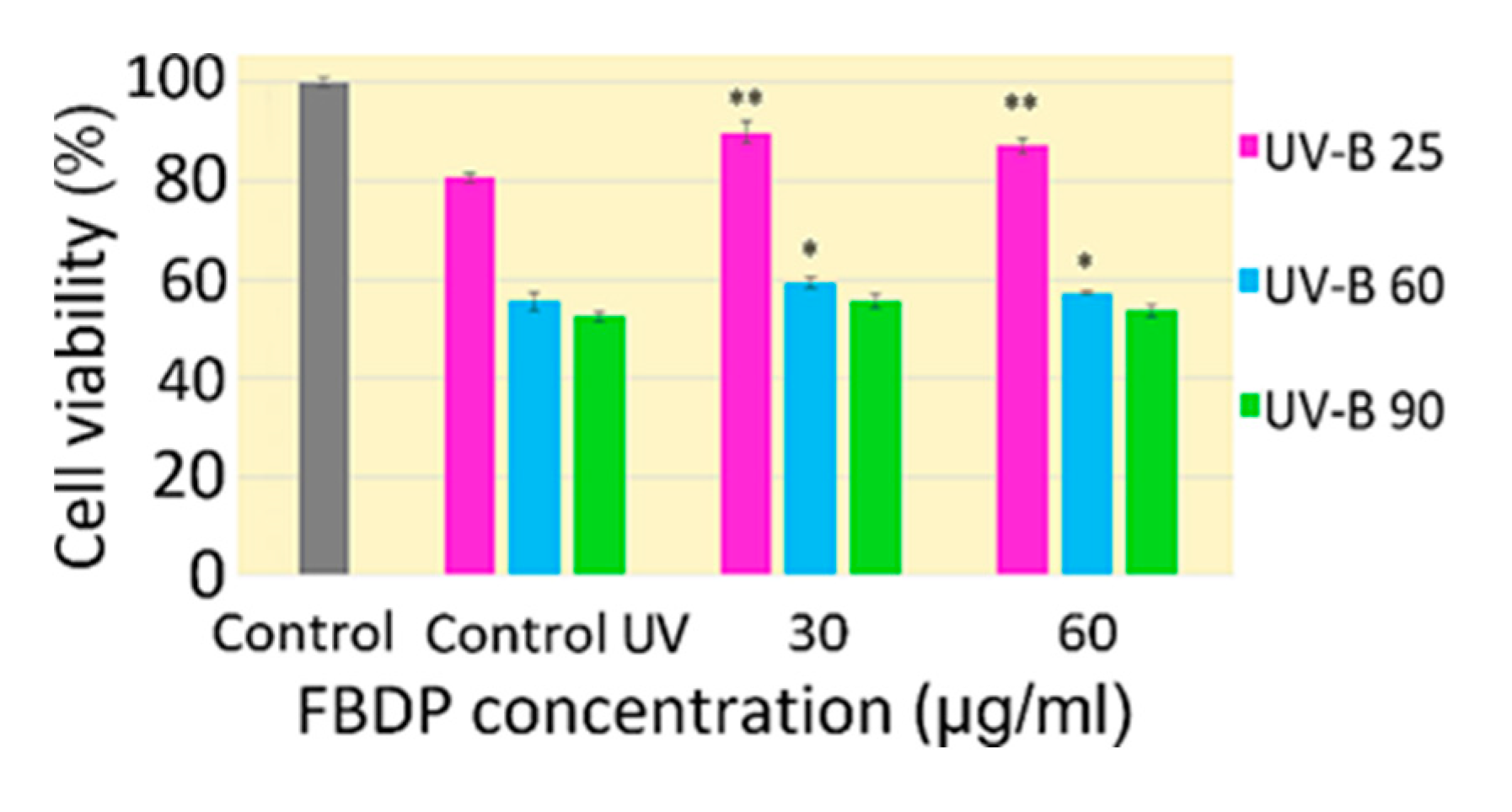Protective Activity of Fish Peptides Fraction in Optimized Model of UV-B Irradiated Mouse Fibroblasts †
Abstract
:1. Introduction
2. Materials and Methods
3. Results
4. Conclusions
Acknowledgments
References
- Zhang, L.; Zheng, Y.; Cheng, X.; Meng, M.; Luo, Y.; Li, B. The anti-photoaging effect of antioxidant collagen peptides from silver carp skin is preferable to tea polyphenols and casein peptides. Food Funct. 2017, 8, 1698–1707. [Google Scholar] [CrossRef] [PubMed]
- Quan, T.; Qin, Z.; Xia, W.; Shao, Y.; Voorhees, J.J.; Fisher, G.J. Matrix-Degrading Metalloproteinases in Photoaging. J. Investig. Dermatol. Symp. Proc. 2009, 14, 20–24. [Google Scholar] [CrossRef] [PubMed]
- Craciunescu, O.; Moldovan, L.; Moisei, M.; Trif, M. Liposomal formulation of chondroitin sulfate enhances its antioxidant and anti-inflammatory potential in L929 fibroblast cell line. J. Liposome Res. 2013, 23, 145–153. [Google Scholar] [CrossRef] [PubMed]

Publisher’s Note: MDPI stays neutral with regard to jurisdictional claims in published maps and institutional affiliations. |
© 2020 by the authors. Licensee MDPI, Basel, Switzerland. This article is an open access article distributed under the terms and conditions of the Creative Commons Attribution (CC BY) license (https://creativecommons.org/licenses/by/4.0/).
Share and Cite
Iosageanu, A.; Ilie, D.; Sanda, C.; Craciunescu, O.; Oancea, F. Protective Activity of Fish Peptides Fraction in Optimized Model of UV-B Irradiated Mouse Fibroblasts. Proceedings 2020, 57, 41. https://doi.org/10.3390/proceedings2020057041
Iosageanu A, Ilie D, Sanda C, Craciunescu O, Oancea F. Protective Activity of Fish Peptides Fraction in Optimized Model of UV-B Irradiated Mouse Fibroblasts. Proceedings. 2020; 57(1):41. https://doi.org/10.3390/proceedings2020057041
Chicago/Turabian StyleIosageanu, Andreea, Daniela Ilie, Catalina Sanda, Oana Craciunescu, and Florin Oancea. 2020. "Protective Activity of Fish Peptides Fraction in Optimized Model of UV-B Irradiated Mouse Fibroblasts" Proceedings 57, no. 1: 41. https://doi.org/10.3390/proceedings2020057041
APA StyleIosageanu, A., Ilie, D., Sanda, C., Craciunescu, O., & Oancea, F. (2020). Protective Activity of Fish Peptides Fraction in Optimized Model of UV-B Irradiated Mouse Fibroblasts. Proceedings, 57(1), 41. https://doi.org/10.3390/proceedings2020057041





